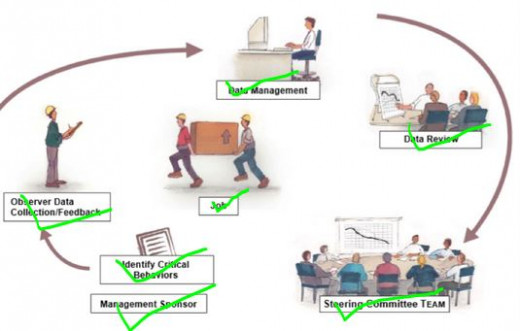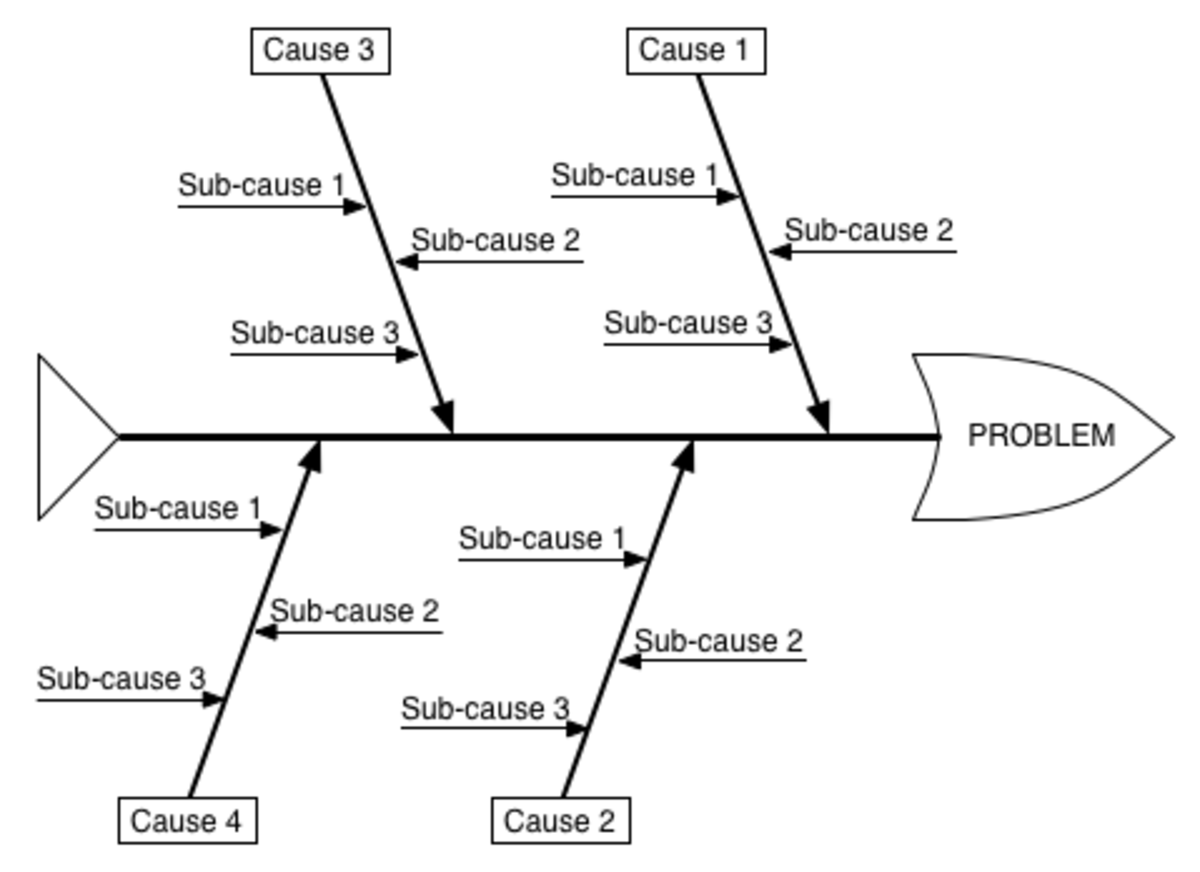Running a Retail Shop – Crucial Policies and Procedures

Of course before you start any business you need to have a plan usually for a minimum of a year. The plan details, among others what types of product you will be selling, your shop layout, how and where you are going to purchase your stocks, how and to who you are going to sell your products, what sources of finance are you going to make use of, how much do you need to start and run your business for a given period of time and how much do you expect to make in terms of revenue and profit. This seems like it is common to everyone who intends to get into any business venture. Isn’t it?
There is one area that most of all these plans for startup or established small businesses tend to ignore or tend to focus less on. Policies and procedures or in general, the Internal control system. Before we deal with how to document and monitor the internal control policies and procedures for small businesses, let us look at some cases where losses were incurred due to improperly implemented internal control systems.
One of the case in 2018 involved 4 shop workers who used their personal Point of Sale Machine to collect part of the sales revenue into their own personal account and would then doctor the sales reports sent to management at day end as a way to cover up for this fraud.
Another everyday challenge which almost all retail shops face is shop lifting. A weakness in the shop design and poor physical controls will result in the loss in inventory to professional thieves who usually target supermarkets especially during busy hours.
In March 2018, a conman stole from a supermarket by allegedly calling the supermarket’s manager using a fraudulently registered line and introduced himself as an official from a non-governmental organization. He allegedly later emailed a purchase requisition to the manager and misinformed him that they were buying the groceries as a donation to a children’s home in another city and that they would settle their bill after taking delivery of the goods. The goods were delivered to the children’s home and the conman used the same tactics to have the goods loaded again from the children’s home to his client.
In the case of TM Supermarket v Mangwiro (04/01) ((04/01)) [2004] ZWSC 125 (22 February 2004) the manager got fired for failing to discover and investigate three missing reset numbers. (One that occurred between 20 and 31 October 1998 and two on consecutive weeks between 10 and 25 November 1998). The total cash lost by the company from one till operator was over $24,000. He also did not timeously take disciplinary action against till operators who had huge cash shortages and also did not adhere to proper filing and storage of till audit rolls and DBS printouts and basic administrative systems and procedures stipulated for controlling and managing cash generated at the branch. His failure to adhere to stipulated systems resulted in the loss to the company of over 69,000.
After analyzing the above cases, I am sure you will appreciate the need to set up a sound internal control system BEFORE you even start your business. Policies and procedures should not only be discussed (verbal) by word of mouth but should also be put on paper and communicated to everyone. These should be fine-tuned from time to time as the changes in the business environment occur. Let us look at the two areas where tight controls are strongly recommended.
Cash and sales controls
I encourage every retail shop owner to invest in a Retail Software which has a point of sale module no matter how small your businesses are. There are a lot of retail software packages on the market designed for small shops even as small as neighborhood tuck-shops. Contact us to give you advice on Retail software packages depending on the nature and size of your business. Management or the shop owner should ensure that all sales are captured through the point of sale module of the system. To ensure effectiveness of this control a third party should check the sales invoice/receipt against the actual items bought each customer as they leave the premises to ensure accuracy and completeness. At the end of each day or at the time when there is a changeover of till operators a reconciliation should be prepared between the system total and the actual physical cash and electronic sales amounts. There are also physical controls relating to cash such as lock boxes and passwords for the authorization of opening of cash drawers.
Inventory Controls
From my experience in the retail business, this area is the most risky of all the areas where if tight controls are not put in place, the business will lose almost all the investment and shut down. Inventory is the back bone of the retail and most of the businesses. For most supermarkets, at any moment in time, inventory accounts for more than 50% of the working capital and therefore adequate controls should be put in place to prevent possible loss mainly due to theft and obsolescence.
Firstly, inventory storage should be properly organized in the warehouse and on the shop shelf in a way that that whenever you want to locate any stock item, you can do that with ease. There are various controls around the receipt of goods which are worth talking about these include the goods received note and the invoice as well as the physical quantities and quality of goods received.
There is a very serious risk of inventory obsolescence with perishable products such as meat and vegetables. The warehouse should be continuously checked for obsolete inventory that is no longer saleable. Reorder quantities and order quantities should be carefully established depending mainly on demand and other future circumstances to avoid scenarios where goods get bad while in storage.
Inventory reconciliations are a key control in the retail business. For small businesses with current assets not exceeding USD30,000, I strongly recommend that they perform overall inventory counts at least twice a month if they cannot do it on a weekly basis. Inventory reconciliations are a comparison between what physically in the shop and warehouse against what is in the records/system. If an overall stock count cannot be performed, a random check can be done on a sample of stock items on a regular basis.
Always keep in mind!
At this juncture, I trust and hope that we have touched on the most risky areas and you now have the basic understanding on how to safeguarding your hard earned investment. However there several business areas for which internal controls should be put in place including Debtors and creditors, fixed asset management. We did not deal with these areas here since most of these are managed by the business owner himself/herself in a small business set up.
Before we conclude, I want you to understand that an internal control system is not 100% effective in the prevention of risk but provide reasonable assurance about the achievement of an entity’s objectives with regard to reliability of financial reporting, effectiveness and efficiency of operations, and compliance with applicable laws and regulations. So how about spend your time improving and monitoring your internal control system? Please work on this on a daily basis.
Please keep this in mind;
- There is no universal approach when it comes to internal control design. Businesses live in different times and circumstances and therefore each business has its own problems which need to be addressed.
- Policies and procedures should be put on paper.
- Internal control system design is a continuous process. Improve them on a daily basis!
- Don’t forget to regularly monitor your controls please!
Firstly, inventory storage should be properly organized in the warehouse and on the shop shelf in a way that that whenever you want to locate any stock item, you can do that with ease. There are various controls around the receipt of goods which are worth talking about these include the goods received note and the invoice as well as the physical quantities and quality of goods received.
There is a very serious risk of inventory obsolescence with perishable products such as meat and vegetables. The warehouse should be continuously checked for obsolete inventory that is no longer saleable. Reorder quantities and order quantities should be carefully established depending mainly on demand and other future circumstances to avoid scenarios where goods get bad while in storage.
Inventory reconciliations are a key control in the retail business. For small businesses with current assets not exceeding USD30,000, I strongly recommend that they perform overall inventory counts at least twice a month if they cannot do it on a weekly basis. Inventory reconciliations are a comparison between what physically in the shop and warehouse against what is in the records/system. If an overall stock count cannot be performed, a random check can be done on a sample of stock items on a regular basis.
At this juncture, I trust and hope that we have touched on the most risky areas and you now have the basic understanding on how to safeguarding your hard earned investment. However there several business areas for which internal controls should be put in place including Debtors and creditors, fixed asset management. We did not deal with these areas here since most of these are managed by the business owner himself/herself in a small business set up.
Before we conclude, I want you to understand that an internal control system is not 100% effective in the prevention of risk but provide reasonable assurance about the achievement of an entity’s objectives with regard to reliability of financial reporting, effectiveness and efficiency of operations, and compliance with applicable laws and regulations. So how about spend your time improving and monitoring your internal control system? Please work on this on a daily basis.
Please keep this in mind;
- There is no universal approach when it comes to internal control design. Businesses live in different times and circumstances and therefore each business has its own problems which need to be addressed.
- Policies and procedures should be put on paper.
- Internal control system design is a continuous process. Improve them on a daily basis!
- Don’t forget to regularly monitor your controls please!






